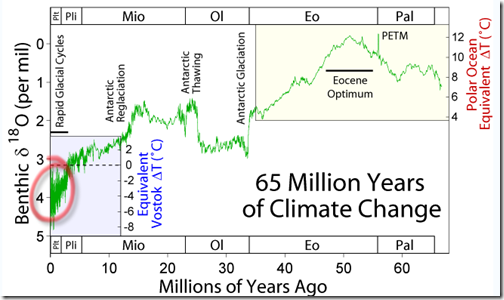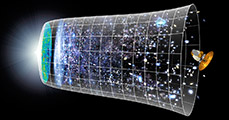My previous article Climate change – debating the rattlesnake’s rattle (posted on 23 March 2010) invited readers to think about the very basics of scientific procedure: questioning, measurement, interpretation, hypothesizing, and all the rest of it.
At the end of that article, I included the following image:

Imagine that the snake represents climate changes
going way back in time, and we’re positioned
at the very tip of the rattle
Readers may not have understood what I was trying to get at, so here’s some more about my intention in introducing the snake analogy.
Firstly, a rattlesnake has a nasty bite! So I’m a little concerned that – whatever “wrong” might signify -- asking the wrong questions, taking or focussing on the wrong measurements, making the wrong interpretations, presenting the maze of information in the wrong ways, will all lead to wrong conclusions and wrong actions being taken (at great effort and expense for us all).
When searching for a rattlesnake image, I was thinking about the rather snakelike, wavy shape of the global temperature fluctuation graph over a very long time scale. I should have included such a chart in that article, but time ran out on me.
Take a look at the Wikipedia article Geologic temperature record and click on each of the thumbnail charts to view larger versions. Think hard!
Here’s one rattlesnake, and what I’ve called its “rattle area” I’ve circled in green. It shows “the long-term evolution of oxygen isotope ratios during the Phanerozoic eon as measured in fossils” (I’m sure you all immediately understand what that means):

View of climate change extending back through the last 540 million years, including many cycles of change from warm to cold and back again.
Hmm, I’m not at all sure if I’m interpreting this correctly! But it seems to be saying that around 450 million years ago (circled in pink) it was even colder than now. And it was certainly far hotter around 70 million years ago (circled in red), even hotter around 270 million years ago (and pretty hot around 360 and 480 million years ago).
Maybe the phanerozoic chart above is not saying that at all, is it? I might be classified as a “trained scientist” but am in no way a climate change specialist, so my interpretation could be way off beam. Exactly what is the above chart telling us?
Then there’s this 65 millions year of climate change chart, obtained :
 Expansion showing climate change during the last 65 million years. Note that the scales are not numerically the same since they are based on measurement different types of taxa under different conditions.
Expansion showing climate change during the last 65 million years. Note that the scales are not numerically the same since they are based on measurement different types of taxa under different conditions.
My “rattle area” this time is circled in pink. Somewhere in that condensed area of the chart is the last few hundred years of climate change.
Hmmm, again. Benthitic Oxygen-18 measurements, changes in chart scaling factors, polar ocean equivalents – but it sure looks impressive!
To me, from this 65 million years chart it’s hard to interpret whether current temperature changes that are filling the headlines are of much significance compared with changes in the last million years or so. Specialists in this field please explain, exactly what does this second chart tell us?
So, sitting on the fence and feeling very uncomfortable, I leave it there for you all to ponder! … Time has run out for me again.








